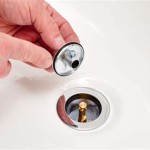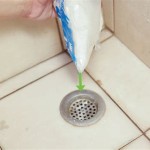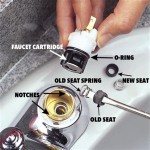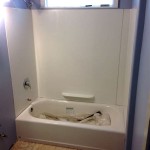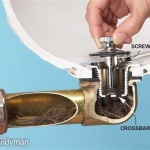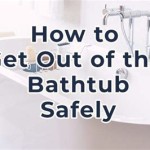Why Is My Bathtub Not Draining Faster?
A slow-draining bathtub is a common household plumbing problem. It can range from a minor inconvenience to a significant disruption, causing frustration and potential hygiene concerns. Understanding the potential causes behind a slow-draining bathtub is crucial for identifying the appropriate solution and preventing the issue from recurring.
Several factors can contribute to a bathtub's drainage issues. These factors can be broadly categorized into obstructions, plumbing system issues, and ventilation problems. A thorough assessment of potential causes is essential before attempting any repairs.
Obstructions Within the Drain
The most frequent cause of a slow-draining bathtub is an obstruction within the drainpipe. Hair, soap scum, and other debris commonly accumulate within the drain, gradually restricting water flow. This buildup often occurs in the immediate vicinity of the drain opening or further down within the pipe's bends and curves.
Hair is a particularly common culprit, as its fibrous structure easily tangles and intertwines with other materials. Strands of hair can catch on rough edges or imperfections within the pipe, forming a nucleus for further accumulation. Over time, this hairball can grow significantly, substantially reducing the diameter of the drainpipe and impeding water flow. Soap scum, a byproduct of the chemical reaction between soap and hard water minerals, also contributes to drain blockages. Soap scum forms a sticky residue that adheres to the pipe walls, trapping hair and other debris.
Other potential obstructions include small objects that accidentally fall into the drain, such as bottle caps, pieces of toys, or dental floss. Even relatively small items can become lodged within the drainpipe, exacerbating existing blockages or creating new ones. The composition of the water itself can also play a role. Hard water, characterized by high mineral content, can accelerate the buildup of mineral deposits within the drainpipe, further contributing to slow drainage.
Identifying and removing obstructions is typically the first step in addressing a slow-draining bathtub. Various methods can be employed to achieve this, ranging from simple manual removal techniques to more advanced plumbing tools. Regular maintenance, such as using a drain strainer to catch hair and debris, can significantly reduce the likelihood of future obstructions.
Plumbing System Issues
While obstructions are the most common cause, plumbing system issues can also contribute to slow bathtub drainage. These issues often involve problems with the drainpipe itself or with other components of the plumbing system that affect water flow.
One potential issue is the condition of the drainpipe. Over time, drainpipes can corrode or become damaged due to age, wear, or exposure to harsh chemicals. Corrosion can create rough surfaces within the pipe, increasing friction and slowing water flow. Damaged pipes may also have leaks or cracks, which can reduce water pressure and impede drainage. In some cases, the drainpipe might have been improperly installed initially, with an insufficient slope or incorrect pipe diameter. A drainpipe that does not have adequate slope will not allow water to flow freely, leading to slow drainage.
Another plumbing system issue that can affect bathtub drainage is a partial blockage in the main drain line. The main drain line is the primary pipe that carries wastewater away from the house. If this line becomes partially blocked, it can restrict the flow of water from all fixtures, including the bathtub. Signs of a main drain line blockage include slow drainage in multiple sinks and toilets, as well as gurgling sounds coming from the drains.
Ventilation problems within the plumbing system can also contribute to slow drainage. Plumbing systems rely on vents to allow air to enter the drainpipes, which helps to equalize pressure and facilitate water flow. If the vent is blocked or improperly installed, it can create a vacuum within the drainpipe, slowing down the drainage process. Ventilation issues are often more complex to diagnose and may require the assistance of a qualified plumber.
Addressing plumbing system issues typically requires professional expertise. Repairing or replacing damaged drainpipes, clearing blockages in the main drain line, and resolving ventilation problems are tasks that are best left to experienced plumbers who have the necessary tools and knowledge.
The Bathtub Stopper and Overflow Drain
The bathtub stopper and overflow drain play crucial roles in regulating water levels and preventing overflows. However, these components can also contribute to slow drainage if they are not functioning correctly or are improperly adjusted.
The bathtub stopper is designed to create a watertight seal within the drain opening, preventing water from escaping. There are several types of bathtub stoppers, including pop-up stoppers, lift-and-turn stoppers, and toe-touch stoppers. Over time, these stoppers can become clogged with hair, soap scum, and other debris, preventing them from sealing properly. A partially blocked stopper will allow water to leak out of the bathtub drain, slowing down the drainage process. In some cases, the stopper may need to be cleaned or replaced to restore proper function. The adjustment mechanism on some stopper types can also become misaligned, preventing the stopper from sealing tightly.
The overflow drain is located near the top of the bathtub and serves as a safety mechanism to prevent the bathtub from overflowing. This drain connects to the main drainpipe and allows excess water to drain away. However, the overflow drain can also become clogged with hair, soap scum, and other debris, restricting its ability to function properly. A clogged overflow drain will impede the drainage process, as it can create backpressure within the drainpipe. Additionally, the connection between the overflow drain and the main drainpipe can become loose or damaged, leading to leaks and reduced water flow.
Regular cleaning and maintenance of the bathtub stopper and overflow drain are essential for ensuring proper drainage. Removing any accumulated debris and ensuring that the stopper is properly adjusted can significantly improve drainage speed. In some cases, it may be necessary to disassemble and clean the overflow drain assembly to remove stubborn blockages.
Beyond these primary causes, several other factors can indirectly influence bathtub drainage speed. Water pressure, for example, can affect the rate at which water flows through the drainpipe. Low water pressure may result in slower drainage, while high water pressure can accelerate drainage. Similarly, the type of plumbing fixtures used in the bathroom can influence drainage speed. Some older plumbing fixtures may have narrower drainpipes or less efficient drainage designs, which can contribute to slower drainage. Finally, the overall condition of the home's plumbing system can impact bathtub drainage. Homes with older or poorly maintained plumbing systems may experience more frequent drainage issues.
Diagnosing the exact cause of a slow-draining bathtub often requires a systematic approach. Starting with the simplest potential causes, such as obstructions in the drain opening, and gradually progressing to more complex issues, such as plumbing system problems, can help to narrow down the possibilities. Regular maintenance, such as using drain strainers and periodically cleaning the drainpipe, can help to prevent future drainage issues. If the problem persists despite these efforts, seeking the assistance of a qualified plumber is recommended.

How To Clear A Clogged Bathtub Drain This Old House

How To Easily Unclog Bathtub Shower Drain In 5 Minutes Jonny Diy

3 Simple Ways To Unclog A Bathtub Drain Naturally Wikihow

How To Unclog Bathtub Drain Pipes Save 200 In Two Minutes

How To Unclog A Bathtub Drain 11 Diy Clog Busters

How To Unclog Your Bathtub Drain In 5 Minutes

How To Unclog A Bathtub Drain 11 Diy Clog Busters

Tub Drain Clogged Fast Diy Fix Weasel

Why Water Might Be Coming Out Of Bathtub Drain Instead Going Down Plumbing Pipe Problems

How To Unclog A Bathtub Drain 11 Diy Clog Busters
Related Posts

